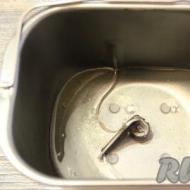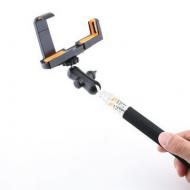
Checking the starter from the VAZ 2109 battery. Checking the car starter with a multimeter. The main causes of starter failure
Despite the wide variety of car models, the starters used in them have almost the same design and work according to the same principle.
The figure shows the electric starter switching circuit used in cars.
The starter is operated in the following sequence. Turning the ignition key closes the contactsSand power from the battery is supplied to the windings of the retractor 3 and holding 4 relay at the same time. Anchor 5 solenoid relay moves inside the core of the relay and thus, through the rod 6 , causes the lever to turn 7 , pushing with its other end, through the driving clutch 8 , gear 10 in engagement with the flywheel ring gear 11 . At this time, the starter motor through the winding 3 receives power from the car's battery and begins to rotate at low speeds. When the armature presses the contact plate 2 to contact bolts 1 , power supply to the electric motor 12 enters directly through the contacts, bypassing the retracting winding. The resistance of the power supply circuit of the electric motor decreases, and it develops maximum speed. At the same time, the gear 10 transmits torque to the crankshaft through the gear rim of the flywheel and the internal combustion engine is started. When the crankshaft speed begins to exceed the starter speed, the freewheel clutch comes into play. 9 .
The gear remains engaged as long as the contact bolts are engaged. Also, as can be seen from the figure, the retracting and holding windings, with an open contactSare connected to the battery in series. And since they have a different winding direction, but the same number of turns, they create magnetic fluxes that are the same in magnitude, but opposite in direction, thereby neutralizing each other. The contact plate, under the influence of the spring, moves to the right and opens the circuit, at the same time acting on the lever 7 and disengaging the gear from the flywheel.
How to check the starter without removing it from the car
Consider the common signs of a starter problem and find out how to test starter at home.
Starter activation and subsequent spontaneous shutdownmay be accompanied by clicks of the switching relay or the starter traction relay. The main reasons for this problem include:
- Bad or discharged battery.
- Low ambient temperature.
- Oxidation of wire contacts, as well as their loose attachment to the battery terminals, traction relay and car body.
- Malfunction of the relay of inclusion and/or the traction relay of a starter.
As you know, lowering the electrolyte temperature to -20 ° C leads to a decrease in battery capacity by 20%. Also at low temperatures ah, the viscosity of the electrolyte increases, which prevents its contact with the active mass of the electrode plates and thereby reduces the voltage at the battery terminals. Based on what has been described, check battery starter at low temperatures will be difficult. If we add to this the possible oxidation of the contacts at the terminals of the connecting wires, then the reasons for the spontaneous shutdown of the starter become clear.
Next, evaluate the degree of oxidation of the contacts by measuring the voltage at the battery terminals and at the traction relay terminal, and the starter housing at rest, and then when the starter is turned on for 3-4 seconds. The difference in the measured readings should not exceed 1.5 V (optimally, they should be the same). It should be remembered that the voltage at the terminals of a healthy 12-volt battery must be greater than or equal to 10 V. For a 24-volt battery, the voltage drop should not exceed 4 V (i.e. U battery ≥20V). Otherwise, it is required to clean and check the strength of fastening of the lugs of the power wires.
Traction relay
The functions of the traction relay are as follows:
- Engaging the starter drive gear with the engine flywheel crown.
- Short circuit of the power supply circuit of the starter motor.
Although solenoid relays from different manufacturers differ in the number of windings, the way they are fixed on the starter, the design of the contact terminals, they all share the same functions and the principle of operation is similar to the operation of a conventional solenoid.

If you look at the section of the traction relay in the figure above, you can see that it contains two windings (holding 13 and retracting 14 ), wound on a brass sleeve, where the anchor moves 11 acting on the rod 15 with movable contact disc 4 . Two immovable contact bolts are fixed in a plastic cover 2 . The contact disk can be of various shapes (rectangular, round or shaped) and is installed insulated from the stem. One of the most common problems in this contact pair is the burning of the contacts or their welding. This is the first reason why it is not recommended to keep the starter turned on for more than 5-6 seconds, the second is the accelerated discharge of the battery.
How to check the starter relay
To check the starter traction relay, connect its terminals to the battery, observing the polarity. If the device is working properly, the starter gear will move and you will hear characteristic clicks.
We have a video on our YouTube channel that you can watchhow to test starter with multimeter (using conventional current clamps) if available car battery and locate the cause of the problem.
A starter is essential for any car - it is with its help that the engine is started. But since this power machine, and when the rotor is jammed, the current can increase up to 700 A, then it often fails. And every driver needs to know the performance of their own. And the most important thing in this matter is to observe safety precautions, since excessive heating of the elements can lead to ignition.
Engine start system
Any car has two sources of energy - a generator and a battery. The first is used to recharge the battery and power all the car's electrics when the engine is running. The battery is used to power the car's systems when the engine is stopped. But most importantly, it supplies the current necessary for cranking the crankshaft to the starter. At the same time, the fuel supply and ignition systems work. All these mechanisms and devices function as synchronously as possible, so that the engine starts very quickly.
For injection engines, the normal start time is 0.8 seconds. And if this time is longer, then it will be necessary to completely diagnose the systems. You need to know for performance.
VAZ-2110, like most other cars, needs timely replacement of components and bushings wear out under the action of friction and high current, become covered with a layer of soot. Because of this, the current consumed by the windings increases several times.
Design features of starters
Any starter used in cars, built according to the classical scheme of a DC motor with parallel excitation. The design includes the following components and parts:
- Aluminium case.
- Front and rear covers.
- Stator winding.
- Rotor with excitation winding.
- Copper-graphite brushes.
- Bendix.
- Overrunning clutch.
- Gear.
- Bushings in the front and rear covers.
- Retractor relay.
An important element is the solenoid relay, it performs two functions at once - it switches the power contacts and engages the gear on the overrunning clutch with the flywheel crown. The bushings transmit minus power to the rotor winding. And yet, thanks to these bushings, made of copper alloy, minimal friction is ensured, which increases the efficiency of the mechanism.
How to remove the starter from the car?
Since it is much easier to check the performance of the removed starter than that installed on the car, it will be necessary to dismantle it. To do this, you will need a set of keys, a screwdriver. In general terms, the withdrawal procedure is as follows:
- Disconnect from the negative wire. Please note that a thick power wire is suitable for the starter, there is no protection (fusible link) on it. Therefore, short-term contact of the wire with the car body can cause the battery to overheat and explode. Be vigilant and always observe safety precautions!
- There are three outputs on the solenoid relay - two power ones (thick wires are screwed with nuts) and one thin one for controlling the winding. First, pull out the plug for connecting the control wire.
- Using the “13” wrench, unscrew the nut that secures the power wire going from the battery to the contact on the solenoid relay.
- The next step is to unscrew all the starter mounting bolts. Usually there are 2-3 of them, no more. But there are some minor nuances different cars. So, on - 2107 the lower mounting bolt is in hard to reach place, you can unscrew it only with the help of a head, an extension cord and a universal joint.

After removing the starter, be sure to visually inspect it to identify mechanical damage. There should be no dents, cracks, holes on the case - this can lead to damage to the windings, ingress of dust and water.
Retractor Diagnostics
It is immediately necessary to check the operability of the solenoid relay:
- To do this, remove it by unscrewing the mounting bolts with a screwdriver.
- Using the “13” key, unscrew the nut that secures the lower contact of the relay to the winding output.
- Install a core with a spring inside the traction relay, hold it with your hand so that it does not fall out.
- It is necessary to apply voltage to the output of the retracting winding. If the core does not retract, then the relay is faulty, it is easier to replace it. But if it got involved, then we can judge that the winding is in good condition.
Here's how to check the performance of the VAZ-2109 starter and any other car with your own hands. Very often, the breakdown lies in the traction relay.

If the starter did not start, did not make any sounds, then this indicates that there may be a breakdown in the power contacts. To do this, you need to use the simplest probe for continuity of circuits.
Connect the multimeter to the power contacts of the traction relay, completely press the core inward with your hands or apply current to the winding. If at the same time the multimeter shows that there is a contact, then the traction relay is fully functional, you will need to look for a breakdown inside the starter.
Rotor winding faults
The easiest way to test the starter is to apply current from the battery directly to the power contact, bypassing the traction relay. This will allow you to find out how the electric motor behaves, whether it gives any signs of life.

But before checking the performance of the battery starter, try to use only thick copper stranded wires in good insulation.
If the rotor does not rotate, then you will have to check it. He most often has such malfunctions:
- The lamellas become dirty - the contacts through which the current is transmitted to the rotor winding. To get rid of such a breakdown, it is enough to clean the gaps between the contacts with a thin blade of a knife.
- A short circuit appears - the insulation of the winding is broken, as a result of which the wire is electrically connected to the metal rotor.
- An interturn short circuit appears - it is most difficult to identify this breakdown, it is necessary to use a megohmmeter for diagnosis. It is impossible to check with a multimeter.
The easiest way to make repairs is to install a new rotor. It is problematic to rewind the winding, since it is difficult to find a suitable wire.
Stator faults
The stator is a fixed part, the winding of which consists of four parts. The wire is thick to provide maximum torque. Before checking the removed starter for operability, be sure to make sure that its windings are not shorted to the housing. You can do this with a simple multimeter. Put it in the "ringing" mode and check if there is contact between the ends of the stator windings and the housing.

If there is no contact, then make sure that there is no break in the windings. Breakdowns are generally the same as those of the rotor, there is no point in rewinding, it is easier to replace the stator with a known good one. But if 90% of the elements in the starter need to be replaced, then it’s better to buy a new one as an assembly - it will come out a little more expensive, but you don’t have to go through everything by cogs.
Faulty brushes and bushings
With the help of brushes, current is transmitted to the rotor winding of the starter. All four stator windings are connected in series-parallel as shown in the diagram below.
If one stator winding is damaged, then the power to the rotor will not be fully supplied. And if the brushes are faulty, then power will not be supplied to the excitation winding. Since it will not work to check the starter for performance from the battery, remove the back cover and brush assembly.

If there is heavy wear, install new brushes - they are sold separately, you can purchase them at any store. It is advisable to replace the bushings, as they become elliptical as they wear. Because of this, friction increases significantly. The current consumption also increases due to the deteriorated contact. The old bushing is knocked out of the back cover with a hammer and a mandrel of a suitable size.
Bendix and freewheel
An overrunning clutch is a device that allows the drive gear to rotate in only one direction. The malfunction of this assembly is characterized by the fact that the starter rotates very quickly, a sound is heard with which the gear engages with the crown, but the rotation crankshaft not happening.
With the help of the bendix, the clutch and gear are moved along the axis of the rotor. The rotor has helical slots. Bendix is driven by a retractor relay.

Other breakdowns of the launch system
Now that all the breakdowns have been sorted out and it has been found out how to check the starter for performance, one feature can be mentioned. The fact is that very often the flywheel crown wears out and starting the engine becomes impossible - the starter gear does not cling to the teeth. You can fix it for free, you just need to remove the gearbox, knock down the crown, warm it up and install reverse side on the flywheel.
How to check the starter when the car does not start - both professionals and amateurs should know about this. Usually this important detail does not fail immediately - the starter gradually hints at malfunctions and therefore it is so important to listen carefully to its work. To check there is a special device - a multitester. They are called after the starter is dismantled, its components - brushes, winding, anchor.
Usually the first question of motorists is “How to check the starter on the battery?”. This manipulation will help to quickly determine whether the starter is working properly. But apart from clicks, which only an experienced professional can decipher, you will not hear anything. When you close the terminals with the leads on the starter housing and the retractor relay, you can immediately see if the motor is spinning, how the relay itself is triggered.
Checking the starter with a battery
When testing with a battery, the starter is checked as follows: the terminal with a minus sign is connected to the body, and the positive one is connected to the upper terminal of the relay. If everything is in order, the gear motor spins, it is taken out into the bendix. From the battery, the test is the easiest and fastest.
How to check the starter solenoid relay is the next question for motorists. To do this, connect the terminal with the “+” sign to the relay. and negative - to the starter housing. In this case, a retractable bendix gear, which is accompanied by a special click, will become a sign of serviceability.
But checking the starter solenoid relay may encounter problems such as burnt contacts, armature jamming, a blown relay or starter winding. Experienced drivers and auto repairmen will always tell you how to check the starter relay.
Checking the starter brushes
How to check the operation of the starter brushes? There are several popular ways. To do this, you need a 12 volt lamp, when one end of its output is thrown onto the brush holder, and the other end onto the body.
The light bulb should light up. If this does not happen, the brushes should be replaced. as this is a sign of the presence of breakdowns in protection.
Another way is to do it with a multimeter if the starter is disassembled. There should be no short to ground. It is worth using an ohmmeter to measure the resistance between the brush holder and the main plate. The resistance in this case should tend to infinity.
A visual inspection will not hurt either - the removed starter is inspected for the integrity of the bushings, armature, winding, brushes, collector. If the bushings are overworked, there may be insufficient current at start-up, and a damaged commutator will cause brush wear, which in turn can affect the turn-to-turn circuit.
Bendix and its performance
To check the starter, it is important to be sure that the bendix is working. This is done quite simply - the overrunning clutch housing should be carefully clamped in a vise (it is better to do this through a soft cloth) and try to twist it in both directions. If it spins, that's a sign of a problem. All attempts to turn it in the other direction must be stopped. The cause may be eaten teeth on the gear. This can be verified by visual inspection. You can completely disassemble the starter and clean it of dirt, old grease.
In order to check the operation of the starter, it is important to assess the condition of its winding. There is a special device for this - a flaw detector. But it can be replaced with a conventional 220 V incandescent lamp according to the principle of checking brushes. To do this, a light bulb with a power of up to 100 W must be connected in series in the circuit between the winding and the stator housing. In this case, one posting is attached to the body, and the second - to the winding terminal. If the light comes on, this is a sign of breakdown. In the same way, you can check the winding of the starter rotor with your own hands - a control is turned on in the network, one output of which is connected to the collector plate, the second to the core. And in this case, the light bulb will be an occasion to do, at best, rewind the rotor, or completely replace it.
Starter anchor: what problems you may encounter
The starter armature is checked at a voltage of 12V. Directly from the battery to the starter, bypassing the relay. When the starter is spinning. that means he's fine. If this does not happen, there is a problem either with the starter or with the brushes. In the case when the starter does not spin, it must be disassembled and checked with a multimeter.
How to check the starter anchor and what problems can be identified? It could be:
- breakdown in the winding area on the housing;
- violation of the soldering of the collector leads;
- closing the winding between the turns.
Quite often, starter diagnostics reveal armature defects, when, due to burnt out lamellae, contacts between the shank and the “cockerel” are broken, the collector wears out and, as a result, the brushes.
Usually, breakdowns happen at the most inopportune moments, when it is not possible to immediately remove the starter or rotor. How to check the starter in field conditions of the road, when there is no garage and car service nearby? Every experienced motorist has his own proven way. It is important to check the starter for operability before setting off on a responsible journey.
The starter starts the engine vehicle. The life of the starter is two times lower than that of the engine and is about 5–6 years. Unfortunately, the starter very often breaks down at the most inopportune moment, and instead of the sound of ignition, complete silence is heard. To avoid such situations, it is necessary to be able to check the starter before it fails, and troubleshoot the parts that arise. Timely diagnostics and prevention is relevant both for used cars and for new cars that have not been in use.
The principle of the starter
The operation of this mechanism is very simple. After the owner of the car turns the ignition key, the automatically retracting relay begins to engage with the gears located on the starter shaft. In this case, the contacts close and a spark occurs, due to which the crankshaft begins to function and the motor turns on.
The main causes of starter failure
The main malfunctions of the starter include:
When the starter is connected, the traction relay that rotates the armature does not work.
During the operation of the mechanism, the traction relay functions, but the armature is inactive or the level of its rotation is not intensive enough.
In the operation of the starter, the armature rotates, but the crankshaft does not scroll.
The starter does not stop working after the engine is turned on.
When the engine is running, and the starter itself does not turn off, you need to quickly turn off the ignition, then open the hood of the car and disconnect the wire going to the relay. The cause of the problem in this situation is the incorrect position of the starter, and this is easy to fix by tightening the bolts that secure it to the engine housing.
Starter check
Access to the starter is somewhat limited, so to check it without removing it from the car, you will need a long screwdriver with a rubberized handle and a voltmeter.
Next, you need to carefully consider the starter, how a thick braided wire is attached to a large bolt, coming from battery- This is the positively charged terminal of the solenoid relay. The red wire of the voltmeter should be attached to it, and the black wire to the mass of the car. Ask someone to turn the ignition key, and look at the arrow on the scale, it should show 12V, and the starter should knock characteristically. If the arrow does not reach this indicator, there is a problem in the battery or the ignition switch itself.
How to check the starter without removing it from the car
To perform a starter check you will need:
Disconnect the wire attached to the solenoid relay that runs from the ignition switch.
Short the positively charged bolt terminal of the relay using the metal part of the screwdriver.
Current will flow from the battery directly to the relay, and the car will start.
If, after completing these steps, everything worked out, then you have a faulty lock and should be replaced, or the retractor relay has worked out.
When the actions taken with a screwdriver could not give any results or it was not possible to reach the necessary terminals, then you will need to remove the starter from the car.
The starter is one of the main components of any car. Without it, starting a car is quite difficult. In general, these are reliable devices, but there are often situations when, after turning the key in the ignition, the starter does not react in any way. But yesterday the engine started in just a few seconds. If this situation caught you on the road, you can quickly find out how to check the starter.
Types of faults
To better understand what happened to the starter, you should understand what malfunctions can happen to it. They can be mechanical or electrical. Mechanical failures include those that occur as a result of wear or deformation of any of the nodes. Among the reasons - errors in the process of use, lack of maintenance, problems in the electrical part.
Electrical faults are associated with problems in supplying voltage to the unit. In this case, the diagnostics is reduced to checking the absence of interturn short circuits, inspecting the contact groups and working surfaces in search of possible burns.
Symptoms
The starter rarely breaks suddenly. The fact that there are problems with the mechanical part will be reported by various extraneous sounds, untimely operation of the unit, extraneous odors. There are several main features that are most often encountered. Knowing these signs, as well as knowing how to check the starter for performance, you can quickly solve problems with it.
Starter doesn't turn all the time
But at the same time, the electric motor of the assembly rotates constantly. In the process of skipping, you can hear the characteristic crackling and grinding of metal on metal. Among possible faults you can highlight the wear of the fork, the breakage of the damper spring, the wear of the gear.

As for a more accurate diagnosis, the unit must be removed. Knowing this symptom and others, as well as knowing how to check the VAZ starter, you can quickly and easily fix the device.
The starter turns but the engine does not turn
At the same time, no extraneous sounds are heard. Most often, these breakdowns are associated with a failed fork. You can only find out for sure after dismantling and disassembling the starter. The plug has a low price, and even novice motorists can replace it.
Engine starts with a metallic screech
In this case, you must immediately turn off the engine.

Most likely, these sounds are caused by a stuck solenoid relay, a jammed fork or gear. You can more accurately determine what happened after dismantling and troubleshooting.
Works intermittently, but may not work
In this case, a blow to the mechanism with a small metal object helps - you need to hit the back of the case. If the engine starts, then the brushes in the starter need to be replaced.
Starter clicks but does not turn
In most cases, the cause is a low battery. The battery voltage is only enough to operate the relay, but the contract plate does not close the nickels, the starter motor is not energized. If everything is in order with the battery, then it is possible that the nickels are burning or there is no voltage on the power wire.
Starter rotates slowly with battery charged
This malfunction is associated with wear of the bushing, with contamination inside the starter motor. It is possible to determine what exactly happened only after dismantling and troubleshooting.
Relay test method
If the car does not start, then the reasons may also be in the breakdown of the starter. If the device is working, then the contacts of the retractor relay are closed with a screwdriver and the starter will work. If nothing happened on a working starter at the moment of closing, then it is necessary to check the relay. Let's see how to test the starter solenoid relay.

The first thing to do is to remove the starter. Next, the output of the relay is connected to the plus of the battery. The case is connected to the minus. With a working relay, the gear will move forward and a click will be heard. If there is no click, then the relay is faulty.
Among the reasons for the failure of the relay, it is possible to single out the burning of the contacts, the anchor that has jammed due to corrosion or dirt, and the burnt windings.
But how to check the starter retractor relay without removing it? Using the method beloved by all motorists with a screwdriver. She closes the contacts on the starter housing - a characteristic click should sound. If you hear a click and you can see how the gear has moved out, then the starter is working.
Starter anchor
This element is a shaft, core. In its grooves there is a collector, as well as a winding. The armature periodically fails due to short circuits in the winding. This situation occurs during overheating when the node is running on a new battery. Within ten seconds, the current decreases, and the starter overheats at this moment, which is why the winding melts. It is possible to determine that it is the anchor that is to blame for the malfunctions, only upon inspection.
Diagnostics
Here's how to test the starter if you suspect a broken anchor. You can suspect this when the battery is charged, and the starter motor does not spin or spins only a little. The anchor is checked only in dismantled form.
The check is as follows - a multimeter measures the resistance between the housing and the armature windings. The resistance should be within a few mΩ. If the resistance is from 0 to several ohms, then the armature is faulty.

And here's how to check the starter at home using a regular light bulb. The lamp is connected to the gap through the armature winding and to ground. The lamp should not light up. If it caught fire, this indicates a breakdown of the brushes.
Here is another way to check. It is necessary to connect the current from the battery to the starter, but bypassing the solenoid relay. If the electric motor works, then there is no problem. If not, then the problem is either with the anchor itself or with the brushes.
Checking the anchor with a multimeter
Most often, the car owner does not have a flaw detector and a control lamp at his disposal. Many people know how to check the starter with a battery and a multimeter. But this is quite enough. Brushes, as well as windings, are checked in the manner described above. But the windings of the solenoid relay are checked in the resistance measurement mode - the indicators should be small.
So, the starter is disassembled and the resistance is measured between the brushes and the plate, the body and the starter winding, the collector plates and the armature core, between the body and the winding on the stator. They also measure the resistance between the ignition off contact and constant +12 V - it is on the shunt bolt for connecting the excitation windings. If everything is in order, then the resistance will be no more than 1-1.5 ohms.
Here's how to check the starter with a multimeter - check the resistance between the ignition terminal and the relay housing. Check the holding winding of the solenoid relay. The resistance should be 2-2.5 ohms.
Bendix
Checking the bendix is quite simple, but the unit must be removed. In a vice, they carefully clamp the body of the overrunning clutch and try to turn it in one direction or the other. Bendix should not rotate. If it still spins, then the overrunning clutch is faulty.

Also, the bendix may not engage with the flywheel, and the starter will simply rotate. Often, the bendix can lie down or its teeth have worn off. You can visually assess the condition of the teeth, and if the mechanism is stuck, you will have to disassemble and clean everything.
Sequence of checks
If the device does not show signs of life, then here's how to check the starter for performance.
The first step is to measure the battery voltage with a multimeter. You need at least 12 volts for the engine to start normally. Next, check the quality of the "mass". check the mass on the car body and on the engine housing, as well as on the starter.
If the engine does not start, you can also carry out computer diagnostics - often the starter blocks the immobilizer. Automatic transmission malfunctions can also lead to the fact that the starter will be silent.
Next, check the contacts of the ignition switch. If there are malfunctions in the contact group, then voltage will not be applied to the solenoid relay. We have already considered how to check the starter relay, so it is also worth checking the lock.
Dismantling and diagnostics
The first step is to disconnect the negative battery terminal. Next, disconnect the plus batteries. Then unscrew the starter mounts and remove it from the brackets. Here's how to test a removed starter.
The minus of the battery is connected to the case, and the plus is connected to the bolt on the solenoid relay. The electric motor should start. If it does not rotate, then the brushes or the collector are faulty. Then they check the relay, nickels and plugs. The minus of the battery is connected to the relay bolt, and the plus to the control output. There should be a click. The fork should drive the bendix. The electric motor must rotate.

Next, check the motor shaft for a runout. To do this, it is moved transversely. Even the slightest gap between the shaft and the bushing can lead to mechanical contact between the armature and the stator. In order to see the wear of the brushes, you need to completely disassemble the mechanism. For most models, this is not so difficult. When the starter is disassembled, check the wear of the fork, the wear of the bendix, the winding of the retractor relay.
Conclusion
So, we examined the main methods for diagnosing this element. Knowing how to check the starter on a VAZ, you can fix any defect and malfunction. A quality repair will prolong the life of this mechanism for many years. How long the unit will work in the end depends on the quality of spare parts, as well as on operation. Often the starter fails due to a violation of the rules of use. Any start of the engine should not exceed ten seconds. If an incomprehensible sound appears during operation, and an unreasonable failure is also observed, it is better to immediately identify and find the root of the problem. It is necessary to constantly monitor the contacts on the car starter solenoid relay.
















